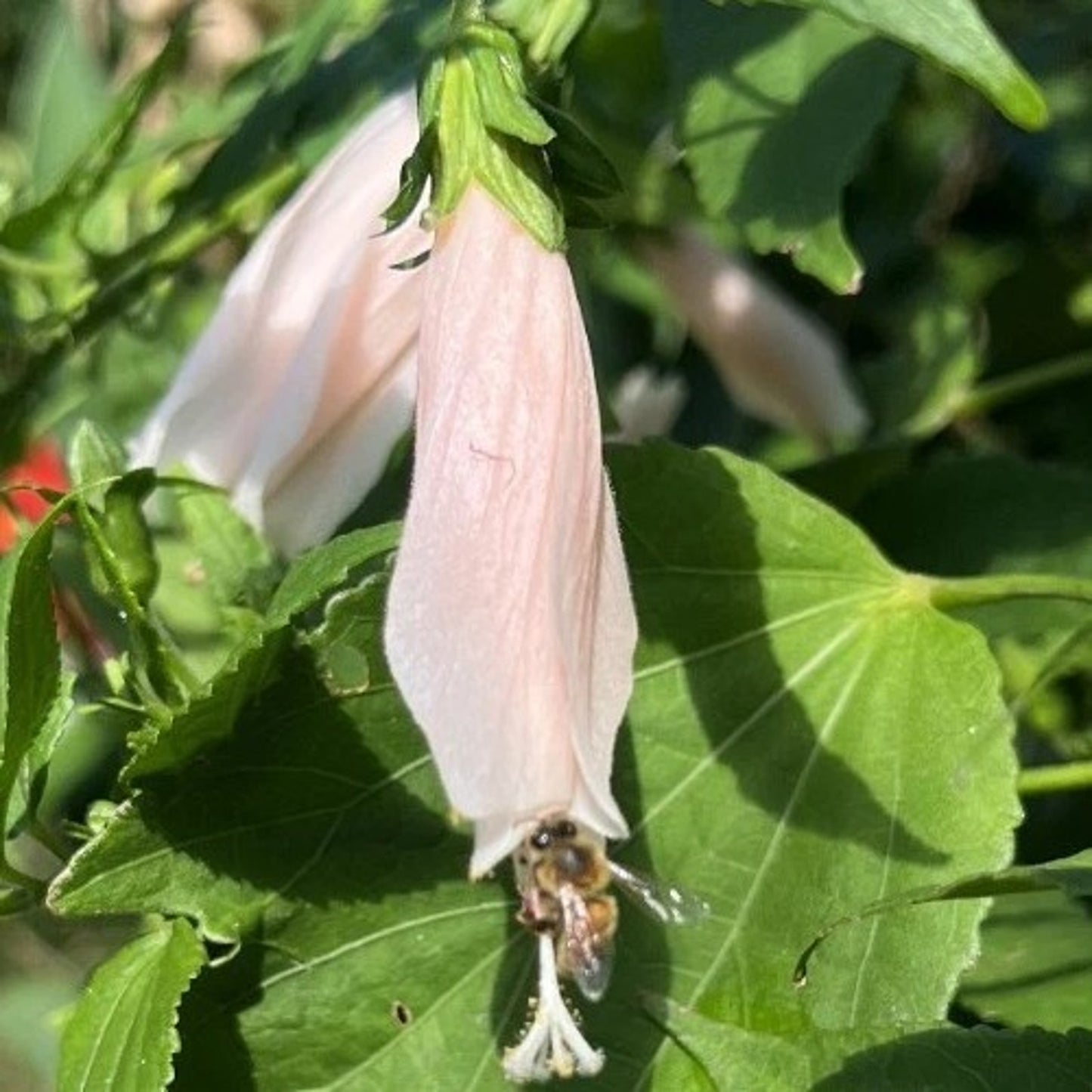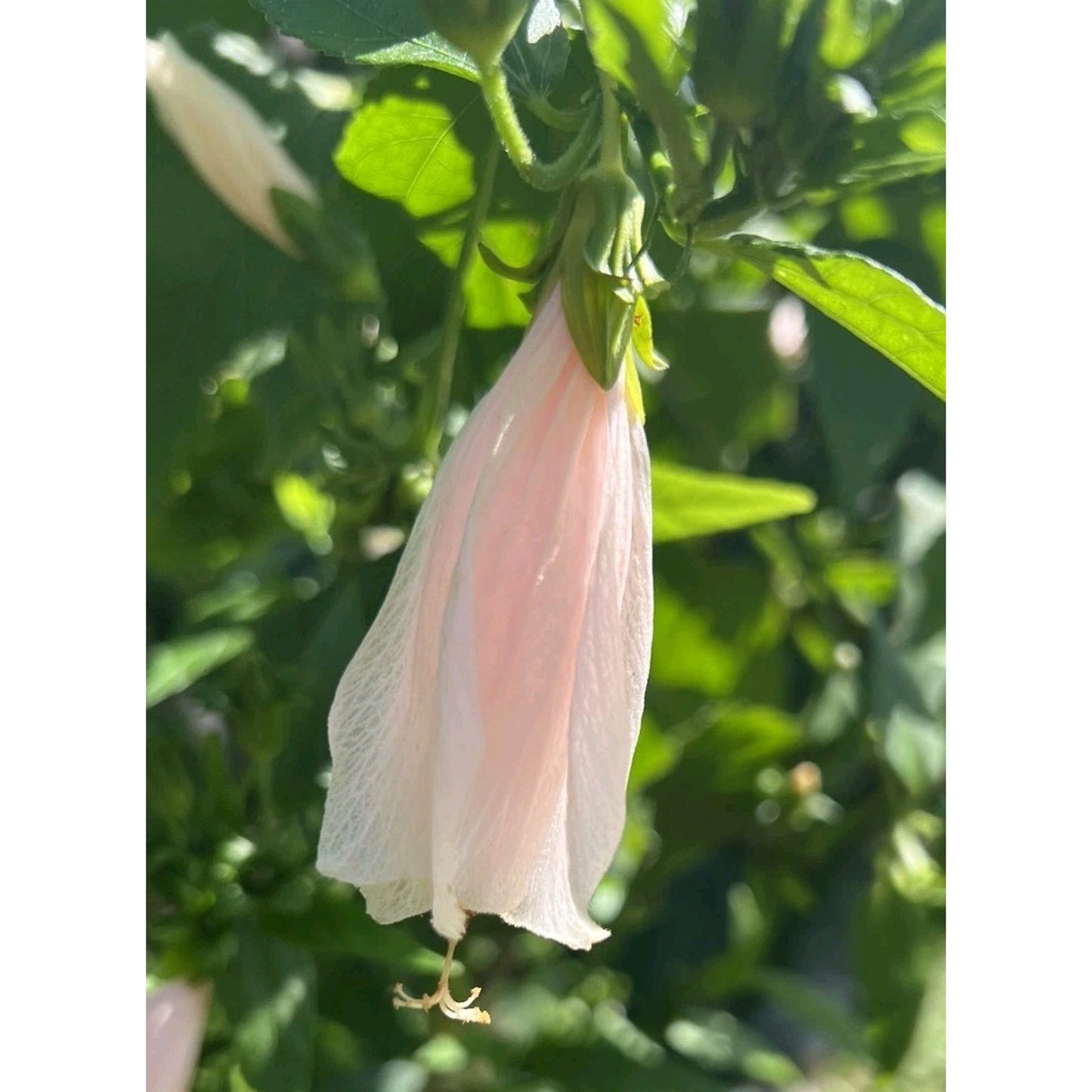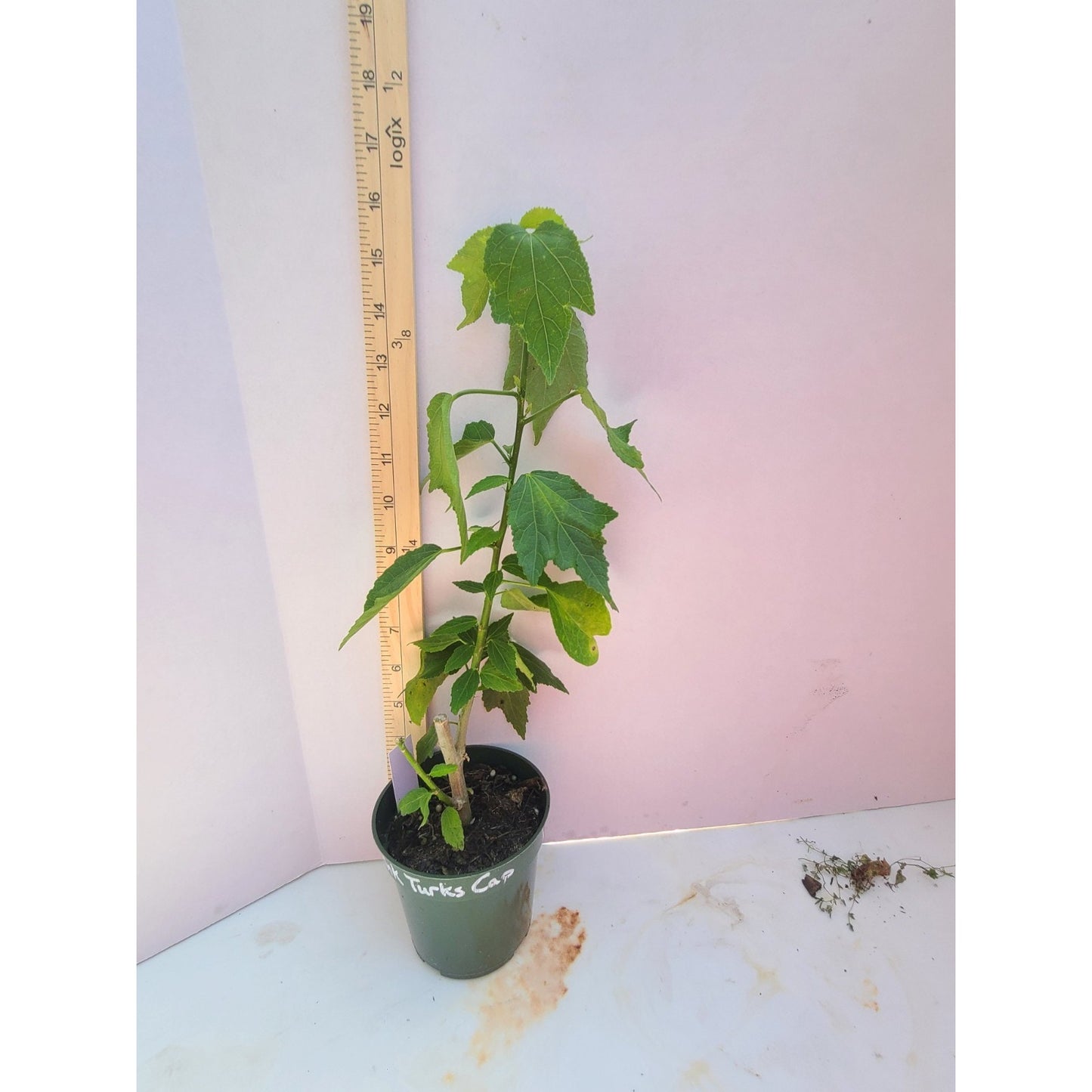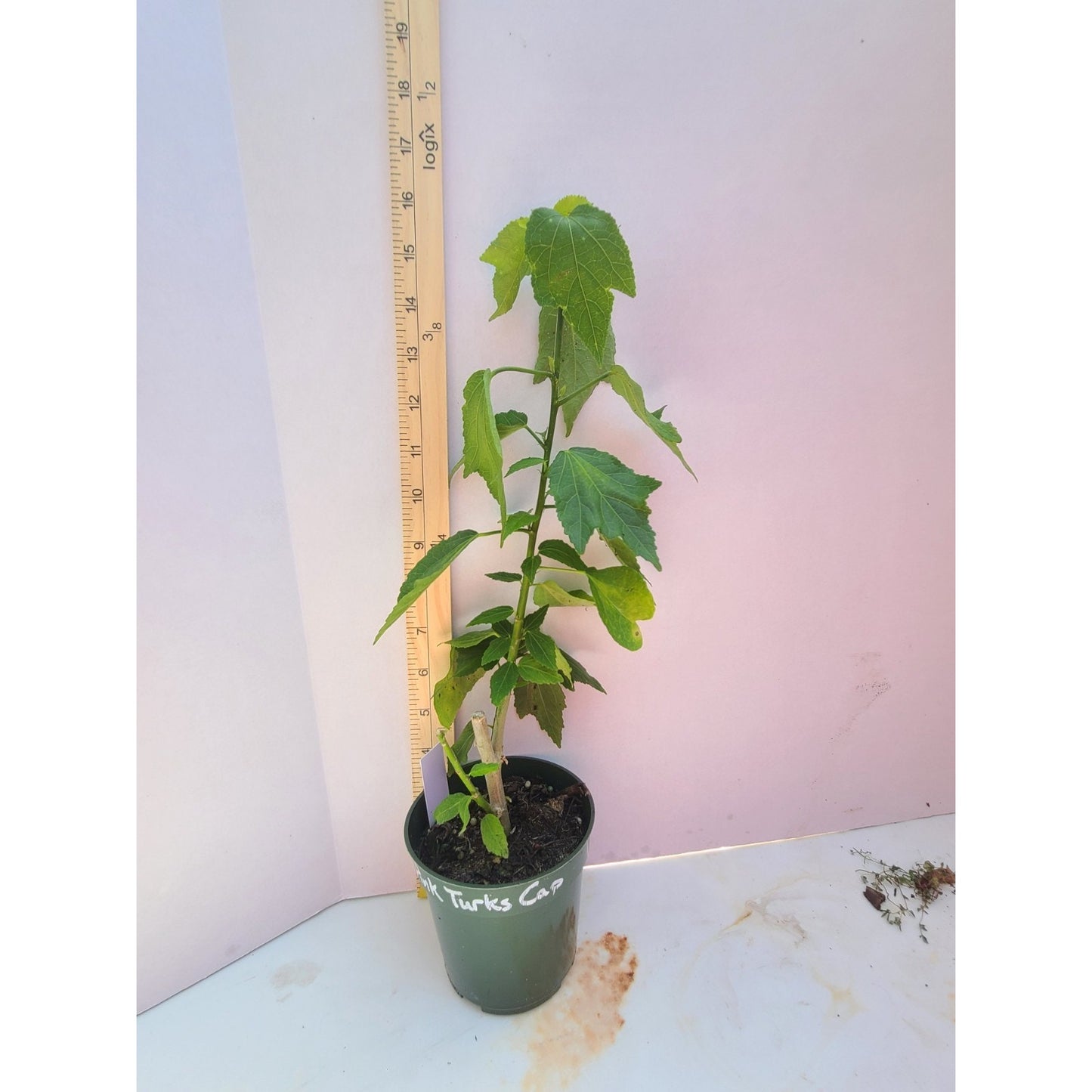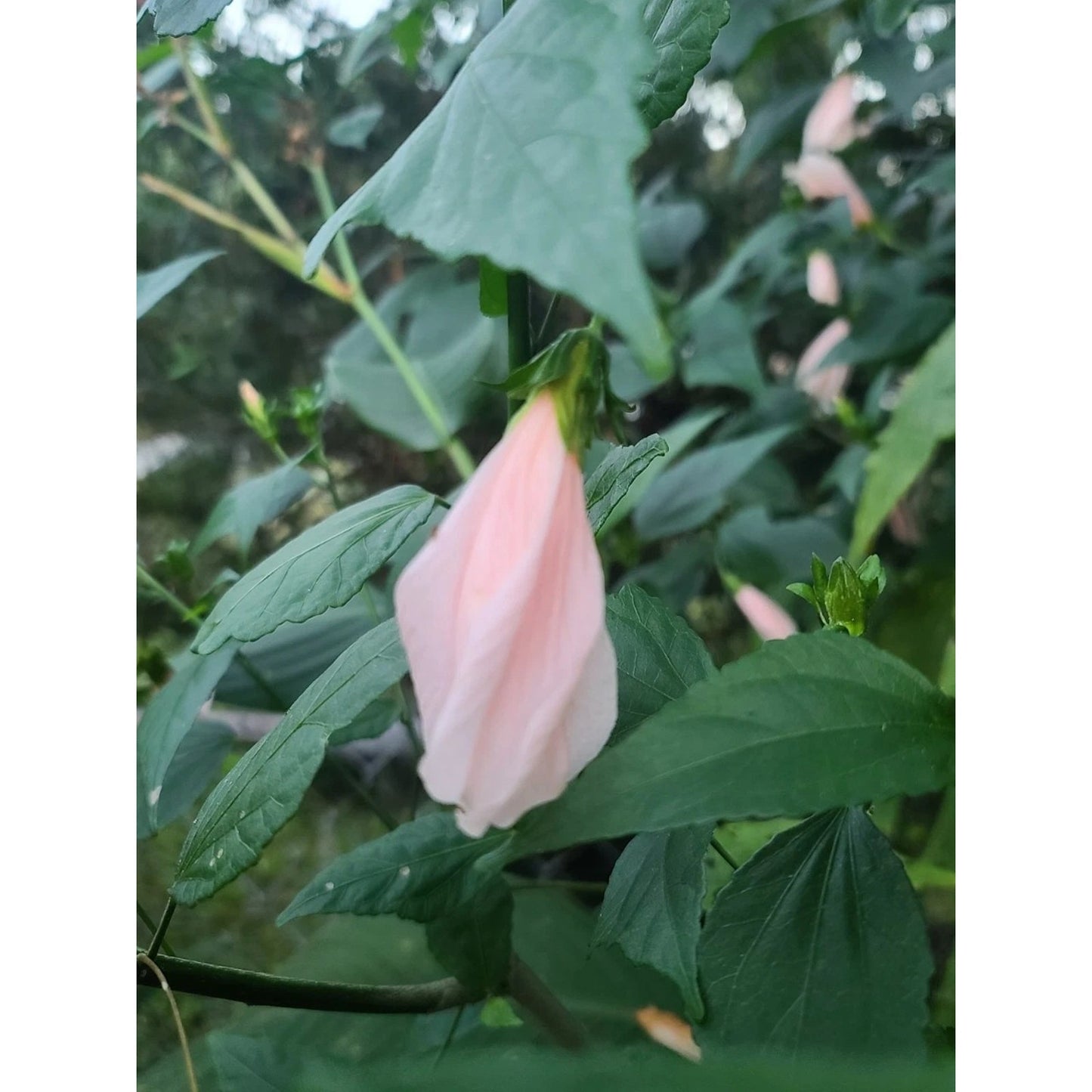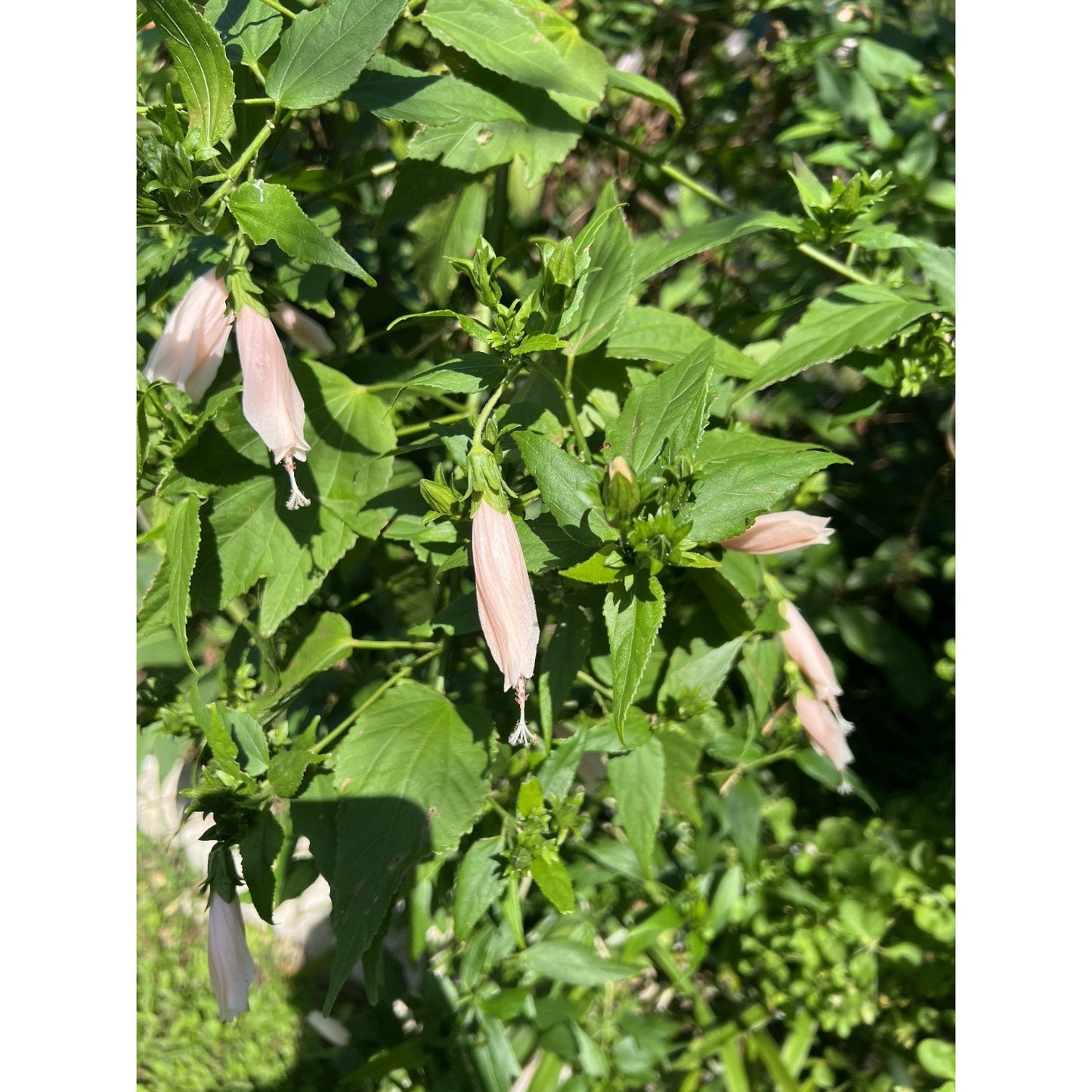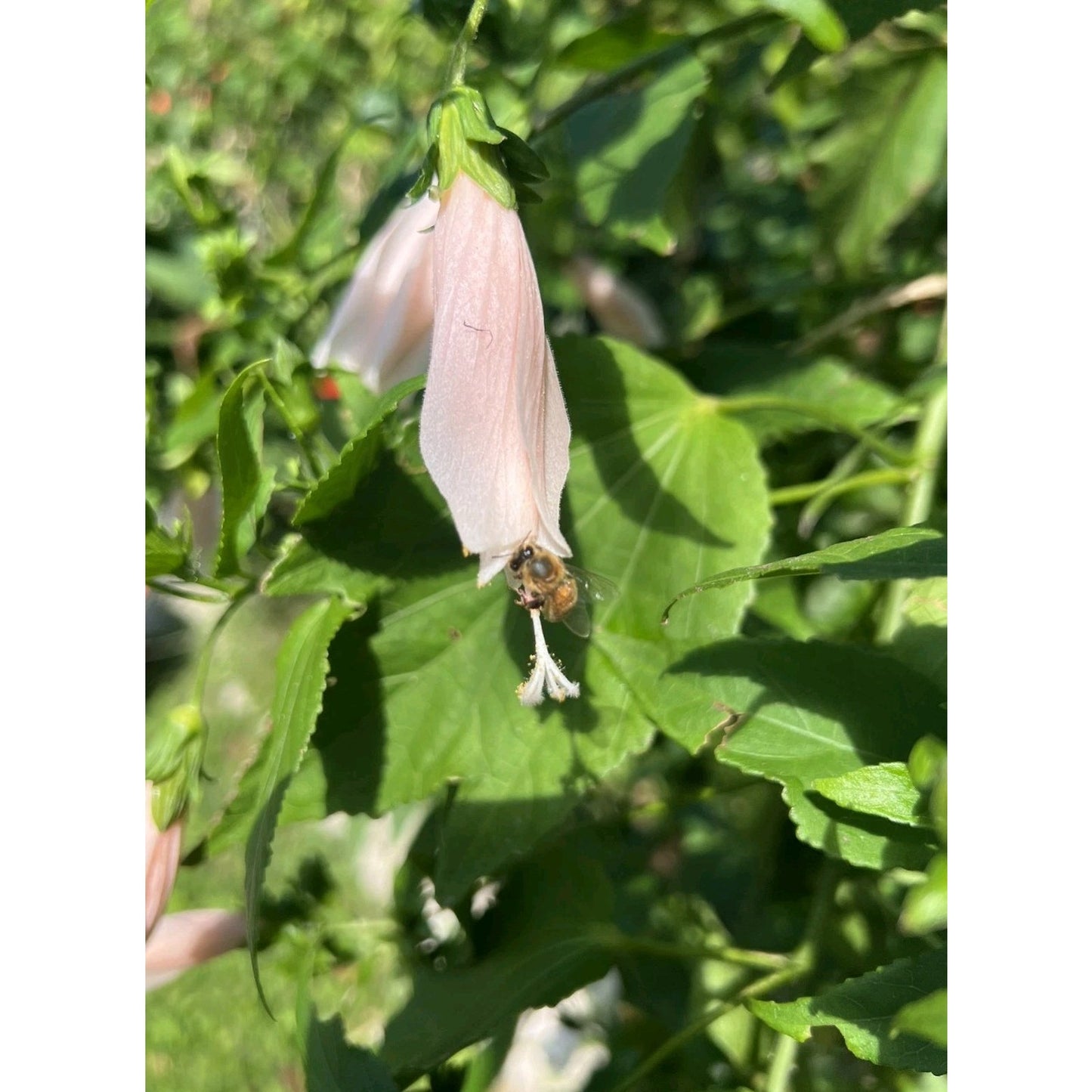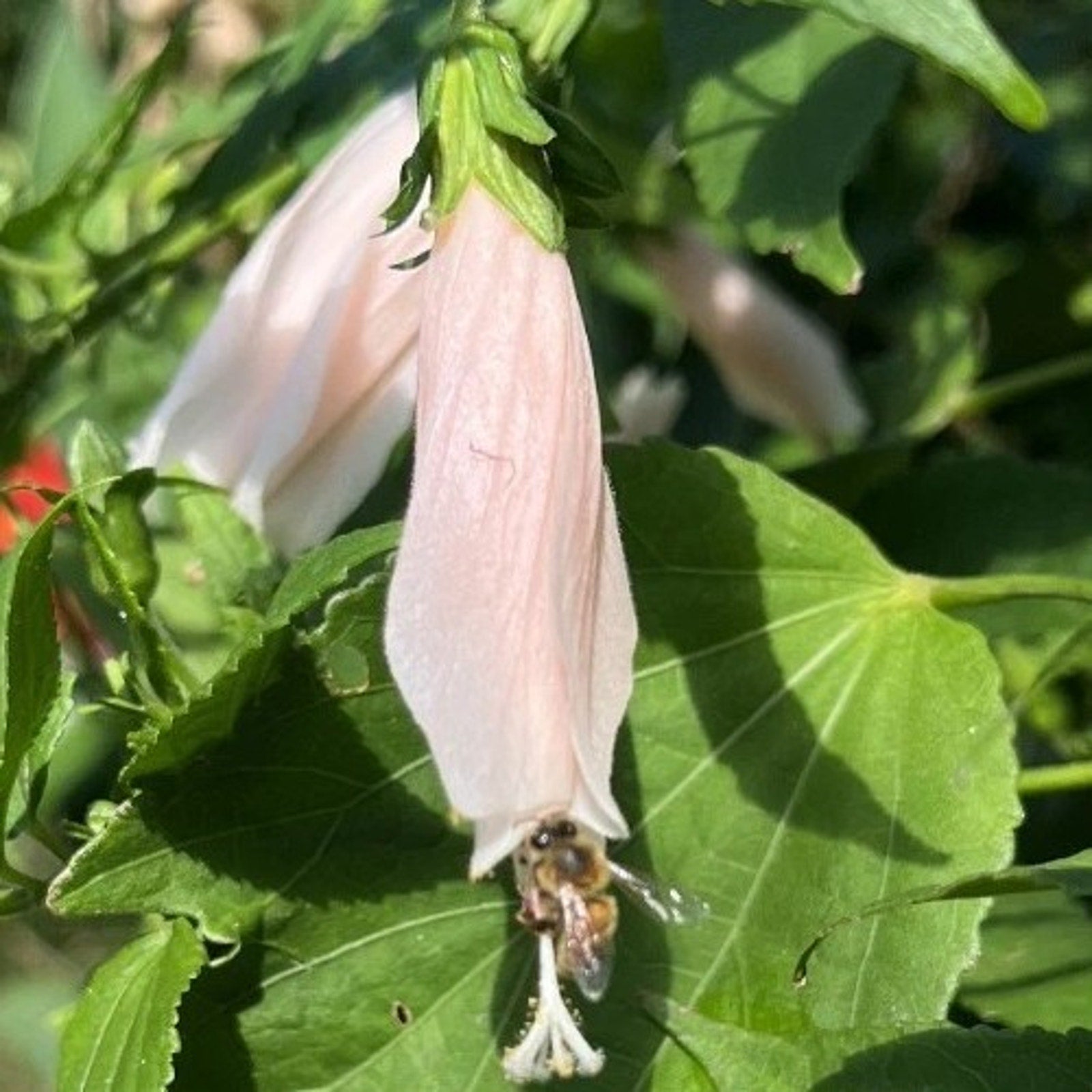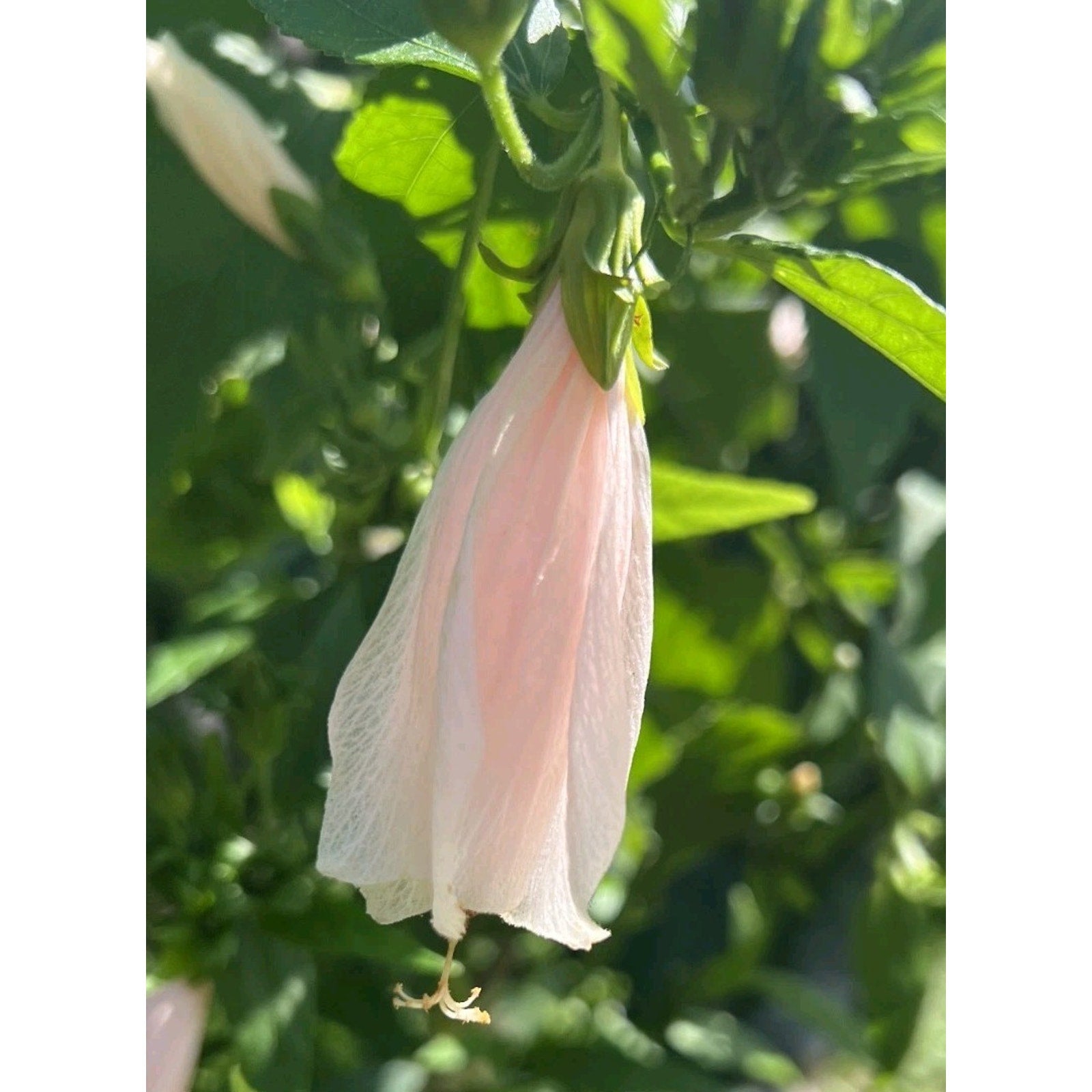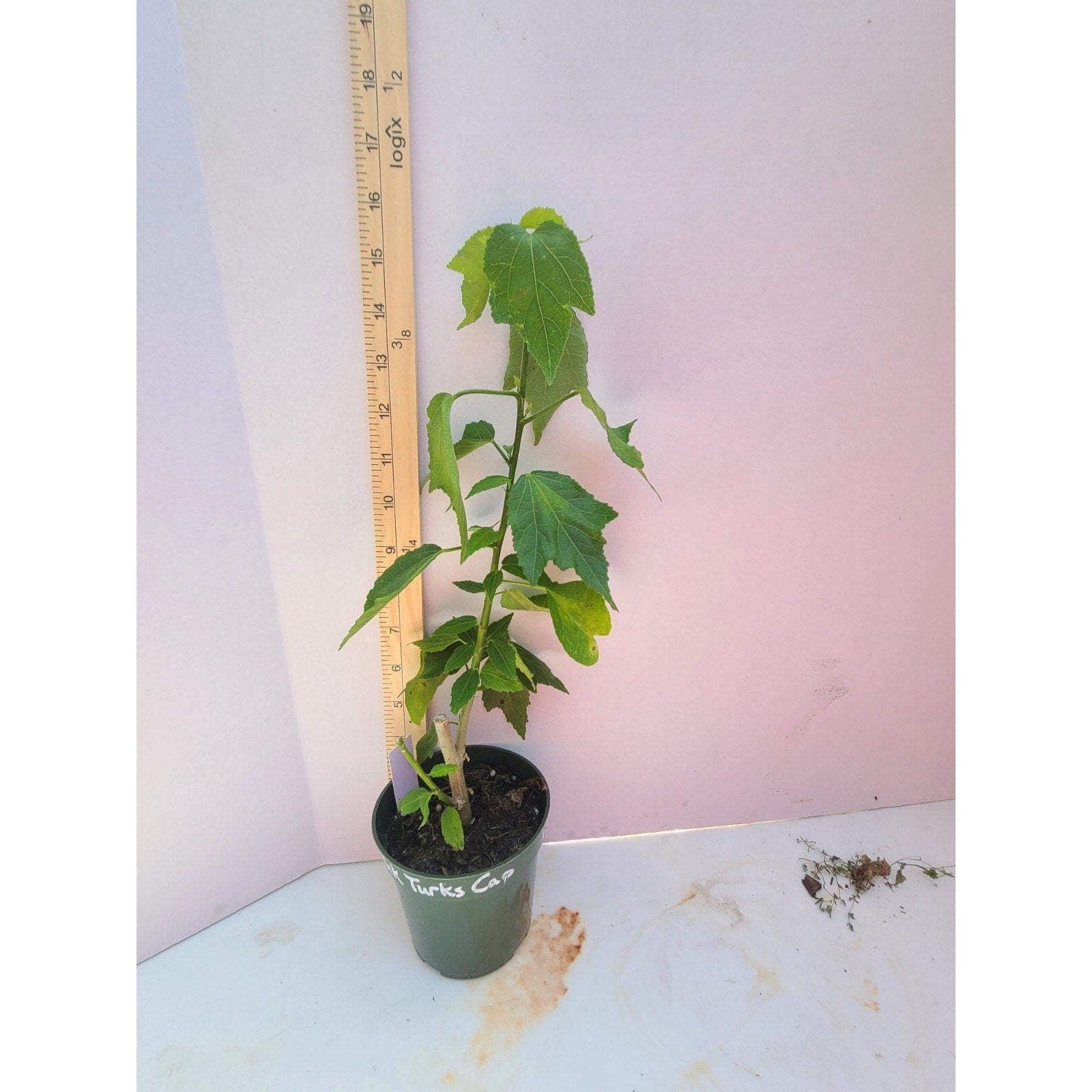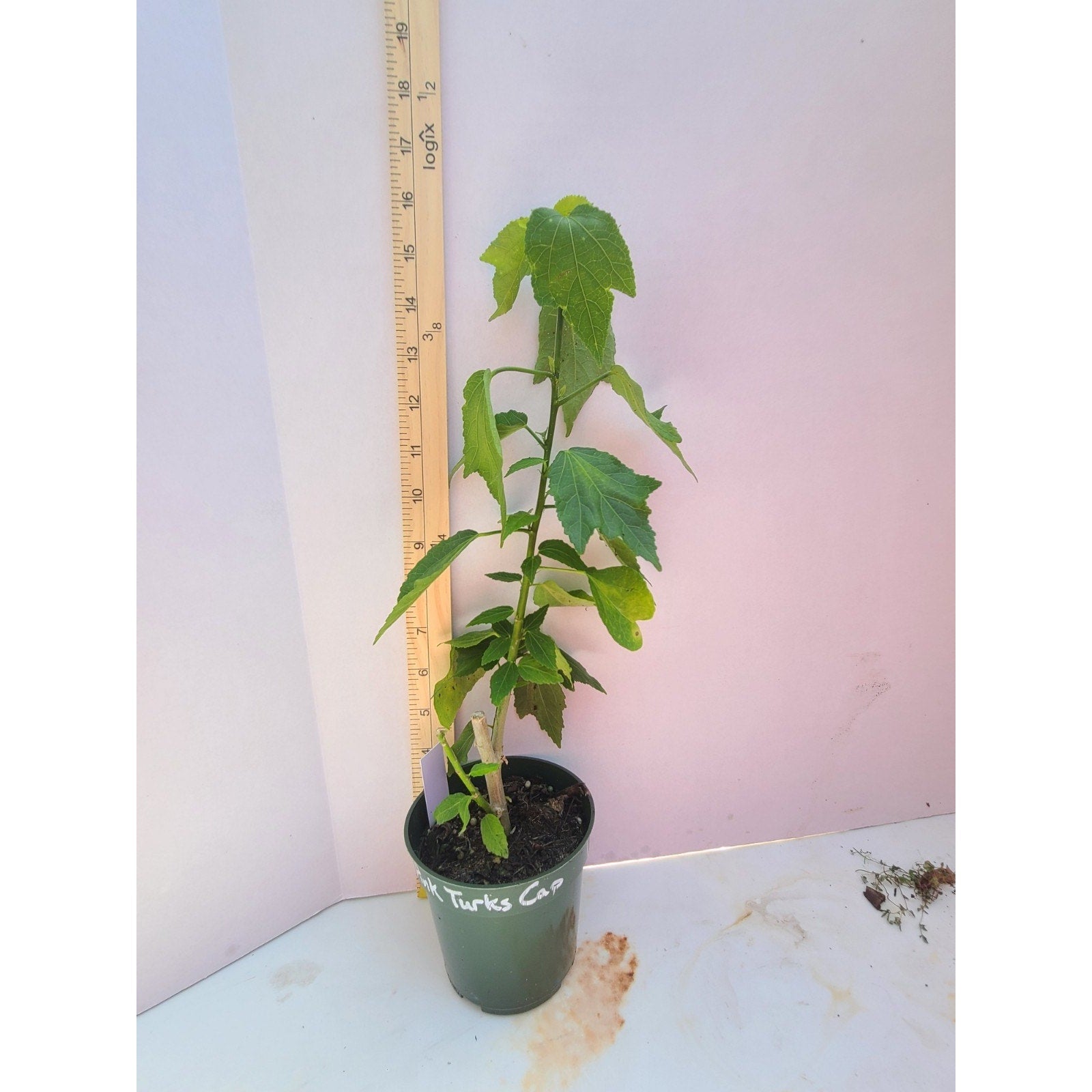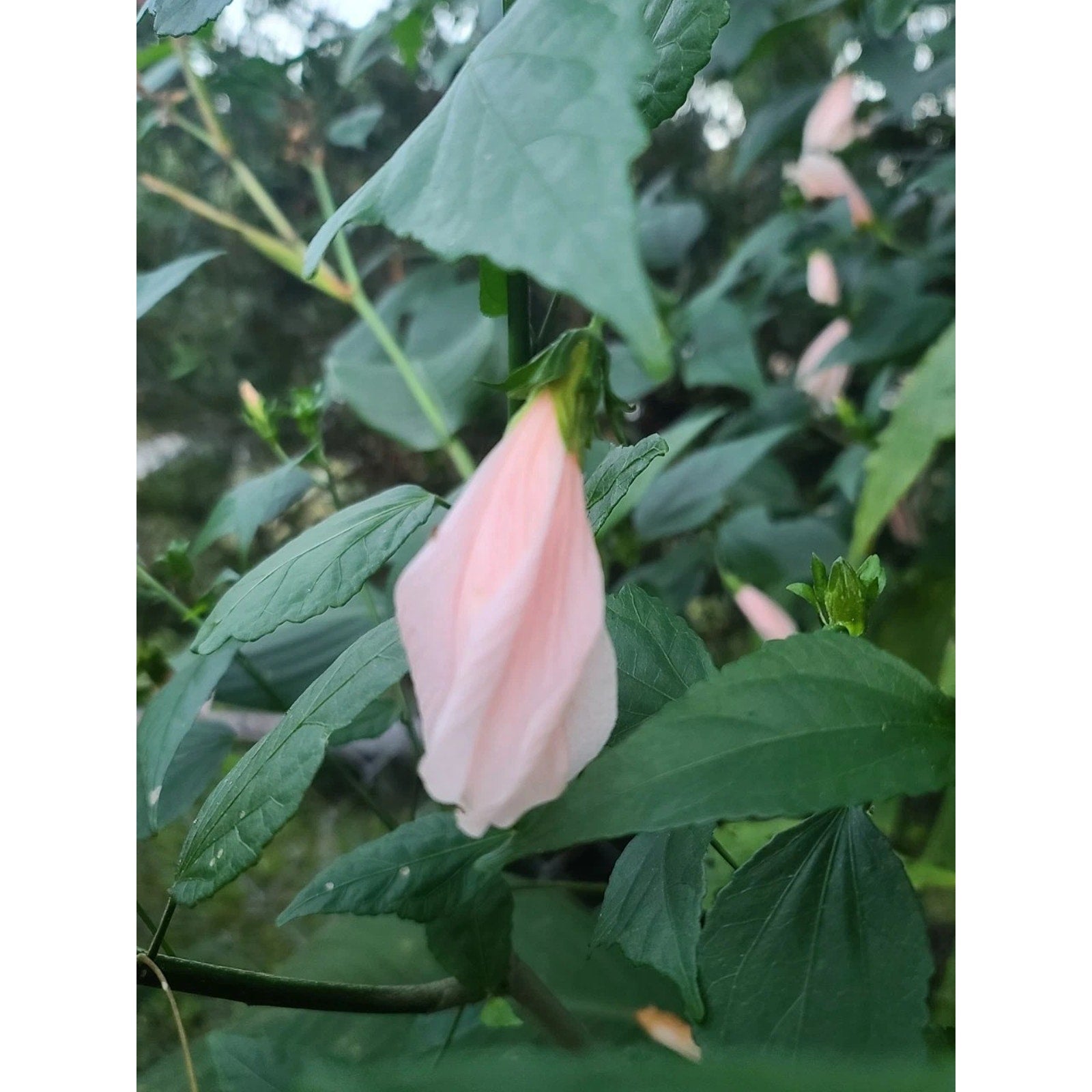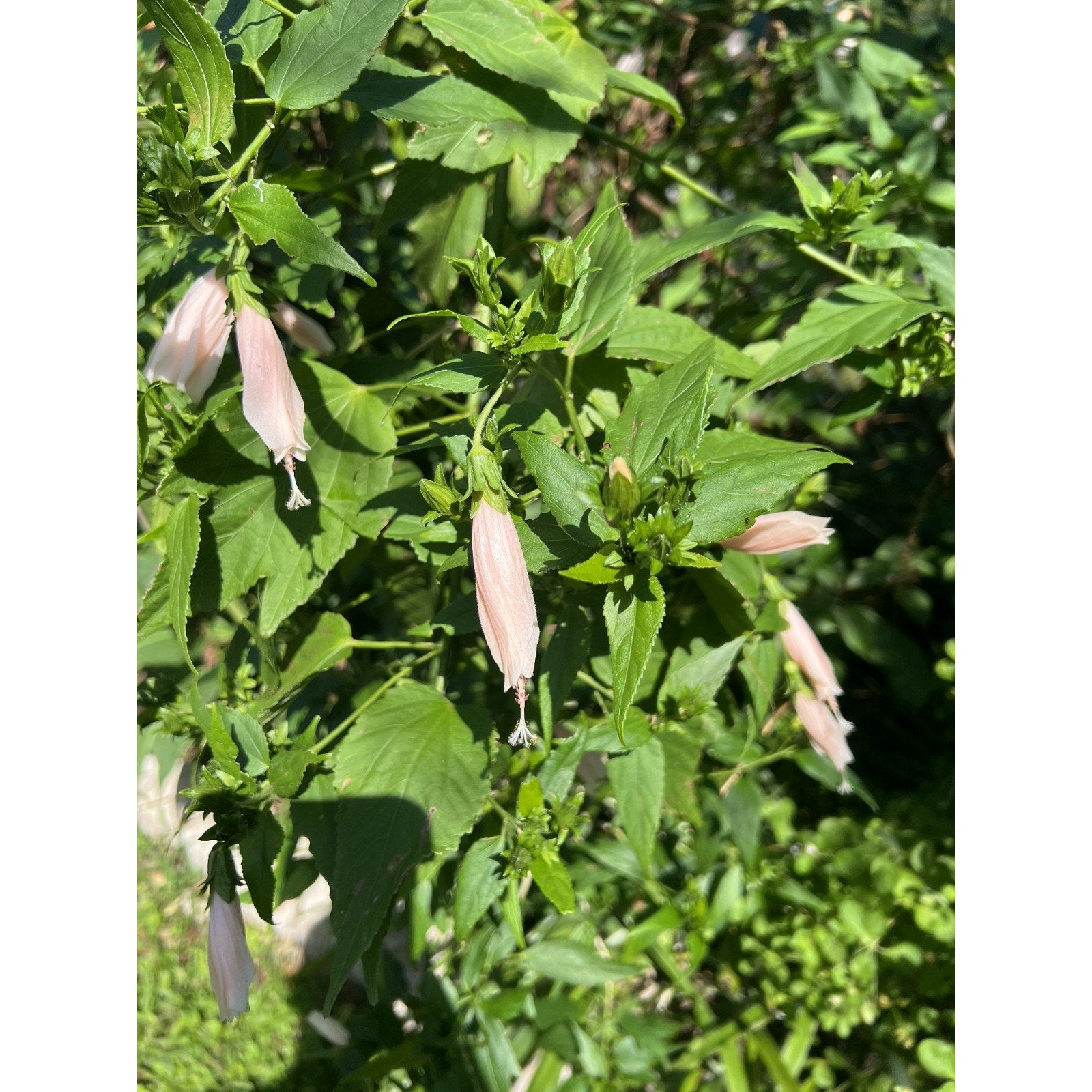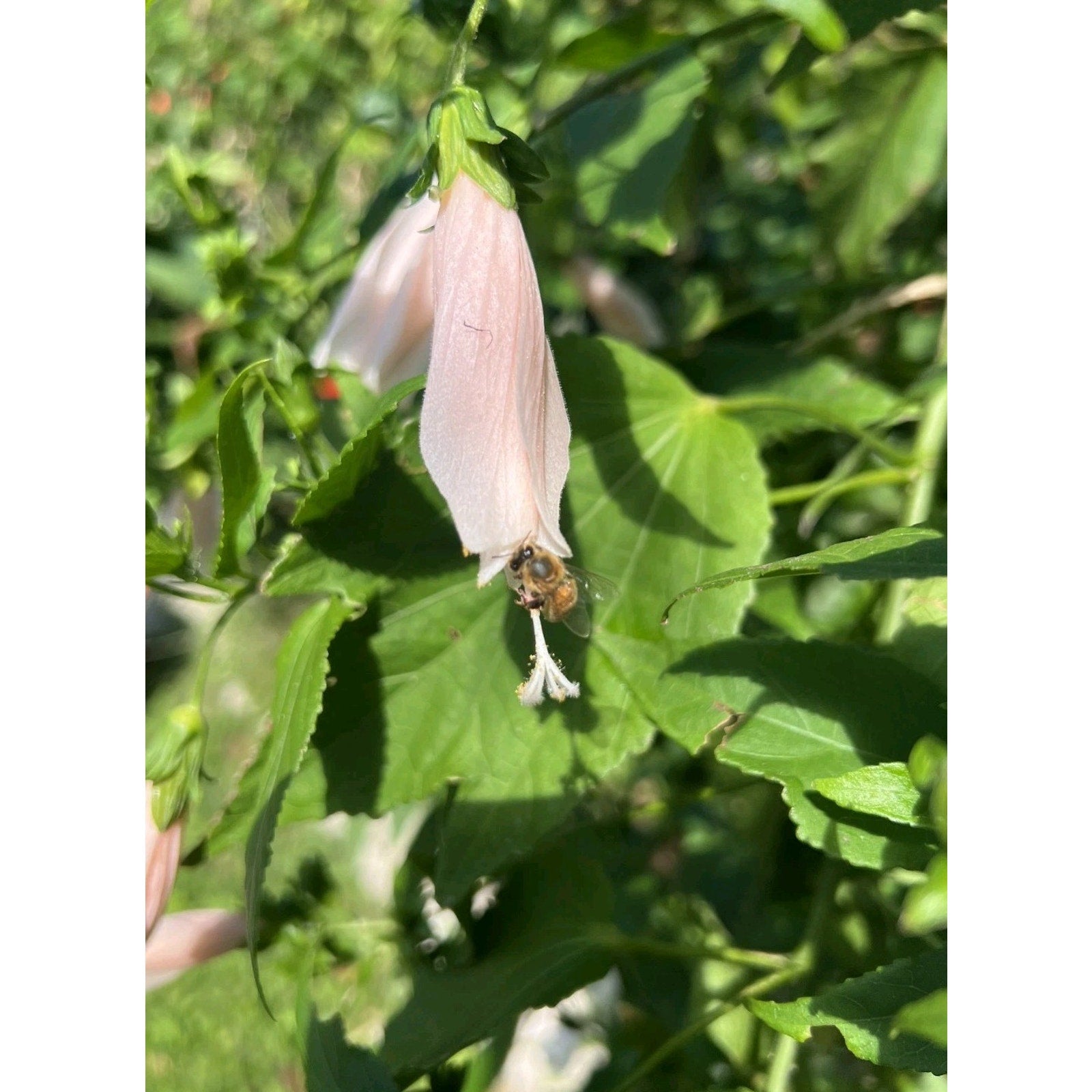Fun Coast Plant Nursery
Light Pink Turks Cap "Malvaviscus penduliflorus" Live Plant 4" Pot
Light Pink Turks Cap "Malvaviscus penduliflorus" Live Plant 4" Pot
Couldn't load pickup availability
Malvaviscus penduliflorus
Common Name: Pink Turk’s Cap
Family: Malvaceae
USDA Zones: 8–11
General Description:
Malvaviscus penduliflorus, commonly known as Pink Turk’s Cap, is a tropical, evergreen shrub valued for its pendulous, hibiscus-like blooms and attraction to wildlife. Native to Mexico and Central America, this plant brings a lush, informal charm to gardens, thriving in warm climates and offering year-round interest. With its softly arching form and continuous flowering, it’s ideal for butterfly gardens, tropical plantings, informal hedges, and container culture in cooler regions.
Growth Habit & Foliage:
This moderately fast-growing shrub typically reaches 4–6 feet in both height and spread, forming a rounded, somewhat sprawling silhouette. Its branches are densely covered with dark green, ovate leaves that provide a full, leafy appearance. The foliage creates an attractive backdrop for the constant display of unique flowers and contributes to the shrub’s overall tropical appeal.
Flowers & Fruit:
The standout feature of Pink Turk’s Cap is its distinctive flowers, which bloom nearly year-round in frost-free regions. The bright to soft pink blooms are long and narrow, resembling miniature hibiscus buds that never fully open. This characteristic “sleeping hibiscus” form draws in hummingbirds, butterflies, and other pollinators. Flowers hang pendulously from the branches, adding an elegant touch to the plant’s form.
Following the blooms, small, rounded, red fruits appear, resembling tiny apples. These edible fruits are favored by birds and small mammals and are mildly sweet for human consumption, though not widely used culinarily. The consistent flowering and fruiting make this plant a valuable source of food and nectar throughout the year.
Light Requirements:
Pink Turk’s Cap thrives in full sun to partial shade. While full sun promotes the best flowering, the plant can adapt to partial shade with only a slight reduction in bloom production. In particularly hot regions, some afternoon shade can help prevent leaf scorch and maintain a healthy, vigorous appearance.
Watering Needs:
Regular watering is necessary during establishment, especially in drier climates. Once established, the plant exhibits moderate drought tolerance, though occasional deep watering will enhance flower production and overall vigor. In containers, more frequent watering may be required to maintain health.
Soil Preferences:
This adaptable shrub grows well in a variety of soil types, provided there is adequate drainage. It performs best in moderately rich, loamy soils but tolerates sandy or clay soils as long as they are not consistently soggy. Good drainage is essential to prevent root rot, particularly in containers or during periods of heavy rain.
Maintenance & Pruning:
Pink Turk’s Cap is low-maintenance, requiring only periodic pruning to maintain shape and control its spread. Light pruning after flowering encourages bushiness and repeat blooms. If grown as a hedge or screen, it can be sheared lightly to retain a more formal shape, though it performs best when allowed a slightly informal, natural growth habit. In late winter or early spring, a more substantial cutback can rejuvenate older plants or control size.
Landscape Uses:
This shrub is a versatile choice for various landscape styles. It shines in tropical, cottage, and wildlife gardens and is particularly effective as an informal hedge, mixed border component, or container plant. Its nonstop blooms and wildlife value make it a favorite near patios, walkways, or windows where its pollinator activity can be easily enjoyed. In regions prone to frost, it can be grown in containers and brought indoors during winter or treated as a seasonal annual.
Wildlife Value:
Pink Turk’s Cap plays a vital role in supporting local wildlife. The tubular, pendulous flowers provide nectar for hummingbirds, bees, and butterflies, while the fruits attract birds and small mammals. Its dense growth also offers shelter for wildlife. In pollinator-friendly and habitat-focused gardens, this plant serves as a reliable source of food and cover.
Pests & Diseases:
Generally pest- and disease-resistant, Malvaviscus penduliflorus may occasionally experience aphids, whiteflies, or spider mites, especially in stressed or crowded conditions. Proper spacing, air circulation, and healthy growing practices typically prevent significant issues. If needed, pests can be managed with insecticidal soap or neem oil.
Cold Hardiness & Protection:
Suitable for USDA Zones 8–11, Pink Turk’s Cap is root-hardy in zone 8 and evergreen in warmer zones. In borderline zones, winter mulch can help protect the roots during freezes. In colder climates, it should be overwintered indoors or grown as an annual.
Tips:
-
Mulch to retain moisture and regulate soil temperature.
-
Avoid overhead watering to reduce fungal risk in humid climates.
-
Use slow-release fertilizer in early spring to promote healthy growth and flowering.
-
Combine with contrasting foliage or upright plants to highlight its soft, arching form.
Share
